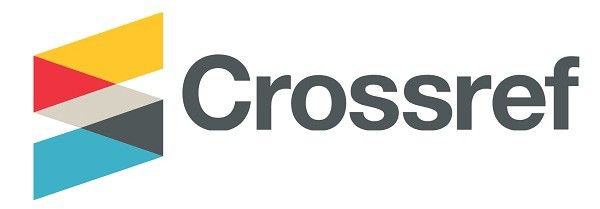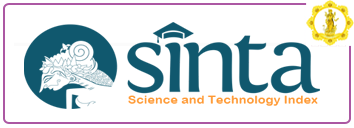ANALISIS KESULITAN SISWA DALAM MENYELESAIKAN SOAL CERITA PENALARAN TINGKAT TINGGI (PTT) MATERI OPERASI HITUNG
DOI:
https://doi.org/10.25078/jpm.v10i02.3286Keywords:
Mathematic, Student Difficulties, Arithmetic Operation, Word ProblemsAbstract
This study aims to analyze students' difficulties in solving PTT-based story problems with arithmetic operation material. This research uses a qualitative method with a descriptive approach. Data collection techniques in this study used tests, observation, and documentation. The subjects of this study were 30 students of class V UPT SPF SD Inpres Tamamaung 4 Makassar. The results obtained from the semantic differential scale related to the level of difficulty of the problem showed a decrease in percentage from the time of pre-research observation and during follow-up results, which was 60% to 20%. The results of the student questionnaire related to the ease of solving the problem also showed an increase from the time of pre-research observations and follow-up results, namely that there were only 15 students increasing to 22 out of 30 students. The cause of students having difficulty in working on story problems is because they do not understand the instructions, do not know how to solve the story problems, and do not understand the concept of arithmetic operations well because they are rarely given exercises using PTT problems so they are not used to reasoning and critical thinking.
Downloads
References
Afgani D., Jarnawi. 2011. Materi Pokok Analisis Kurikulum Matematika. Universitas Terbuka,
Jakarta.
Amallia, N., & Unaenah, E. (2018). Analisis Kesulitan Belajar Matematika Pada Siswa. Attadib Journal of Elemetary Education, 3(2), 123–133. https://doi.org/https://doi.org /10.32 507/attadib.v2i2.414 Ariani, Nita. (2010).
Ensiklopedia Matematika. Bogor: Arya Duta.
Basrowi & Suwandi. (2009). Memahami penelitian kualitatif. PT. Rineka Cipta.
Fatimah. (2009). Matematika Asyik dengan Metode Pemodelan. Bandung: DAR! Mizan.
Heather C. Hill, D. L. B. and S. G.
S. (2008). Unpacking Pedagogical Content
Knowledge: Conceptualizing and Measuring Teachers’ Topic-Specific Knowledge of Students. Journal for Research in Mathematics Education, 39(4),372–400. https://doi.org10.5951/jresemat hed uc.39.4.0372
Hermawan, A., Haki Pranata, O., & Ganda, N. (2018). Pedadidaktika: Jurnal Ilmiah Pendidikan Guru Sekolah
Dasar Pengaruh Pendekatan Pemecahan Masalah terhadap Hasil Belajar Siswa pada Materi Soal Cerita tentang Perkalian. All Rights Reserved, 5(2), 230–240. https://doi.org/https://doi.org/10. 17509/pedadidaktika.v5i3.12642
Herwina, W. (2021). Optimalisasi Kebutuhan Murid Dan Hasil Belajar Dengan Pembelajaran Berdiferensiasi. Perspektif Ilmu Pendidikan,35(2), 175–182. https://doi.org/10.21009/pip.352.10
Mawaddah, S., & Anisah, H. (2015). Kemampuan Pemecahan Masalah Matematis Siswa Pada Pembelajaran Matematika dengan Menggunakag) di SMPn Model Pembelajaran Generatif (Generative Learning) di SMP. EDU MAT:Jurnal Pendidikan Matematika, 3(2), 166–175. https://doi.org/10.20527/edumat.v 3i2.644
Munawwarah, M., Laili, N., & Tohir, M. (2020). Keterampilan berpikir kritis mahasiswa dalam memecahkan masalah matematika berdasarkan keterampilan abad 21. Alifmatika: Jurnal Pendidikan Dan Pembelajaran Matematika, 2(1),37–58. https://doi.org/10.35316/alifmati2020.v2i1.37-58
Rahardjo, M dan Astuti Waluyati. 2011. Pembelajaran Soal Cerita Operasi Hitung Campuran di Sekolah Dasar. Yogyakarta: Pusat Pengembangan dan Pemberdayaan Pendidik dan Tenaga Kependidikan Matematika. Rayungsari, M., Pusparini, D. A., & Nurmalitasari, D. (2021). Analisis Kesalahan Mahasiswa Pendidikan Matematika dalam Menyelesaikan Soal Cerita Berbahasa Inggris Berdasarkan Klasifikasi Watson. Prosiding Transformasi Pembelajaran Nasional 2021.1:348.
Subini, Nini. (2016). Mengatasi Kesulitan Belajar Pada Anak. Yogyakarta: Javalitera.Utari, D. R., Wardana, M. Y. S., &
Damayani, A. T. (2019). Analisis Kesulitan Belajar Matematika dalam Menyelesaikan Soal Cerita. Jurnal Ilmiah Sekolah Dasar, 3(4), 545.









